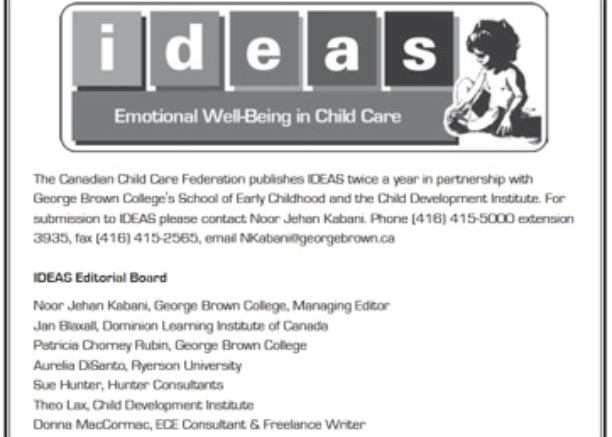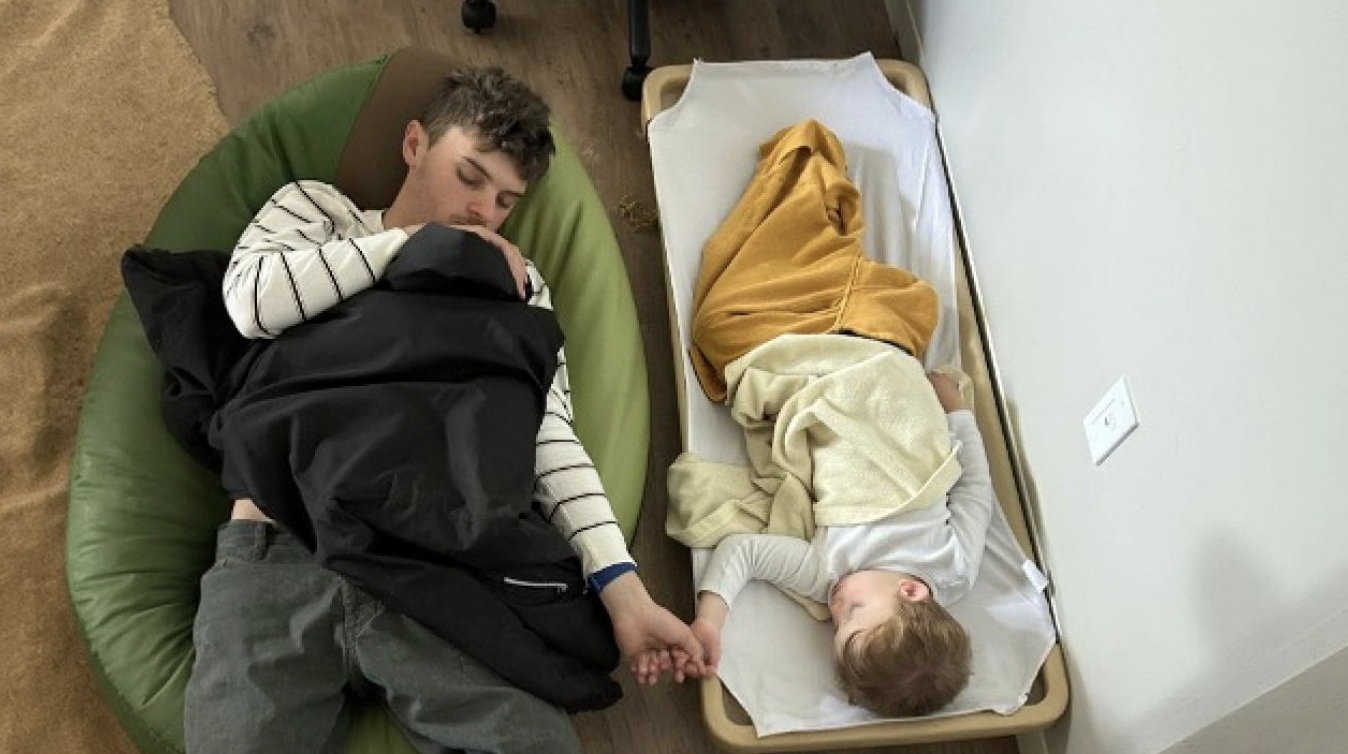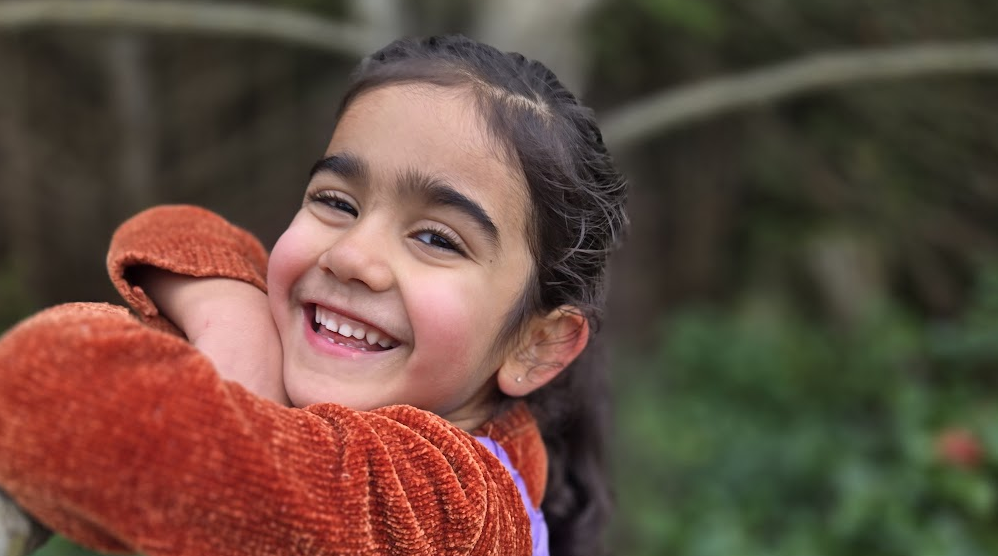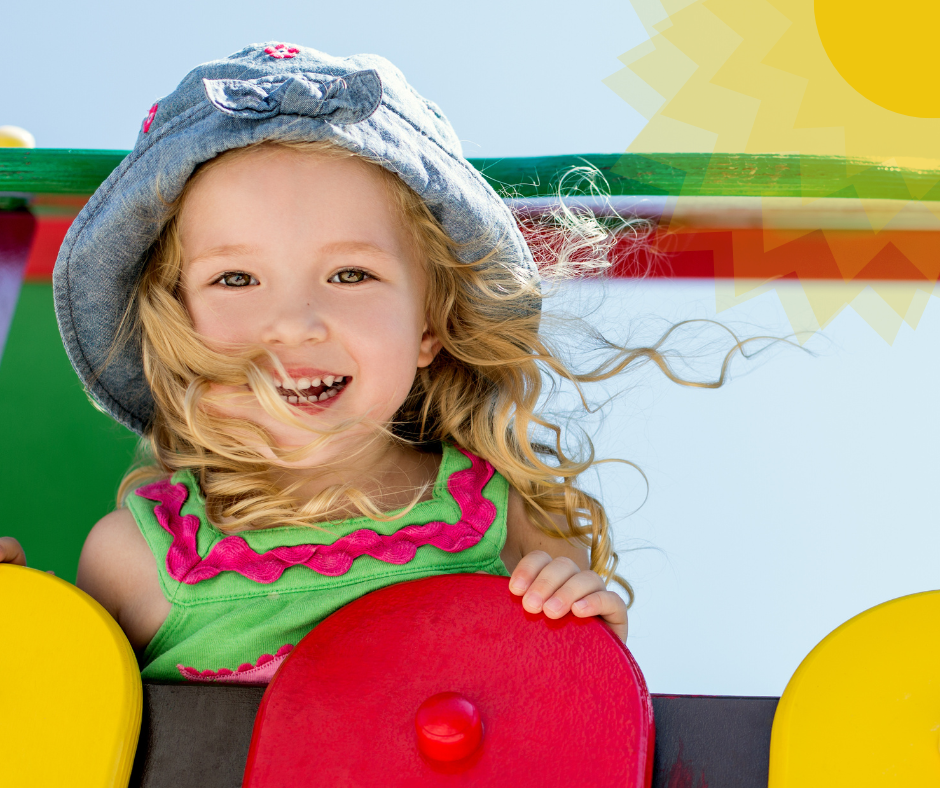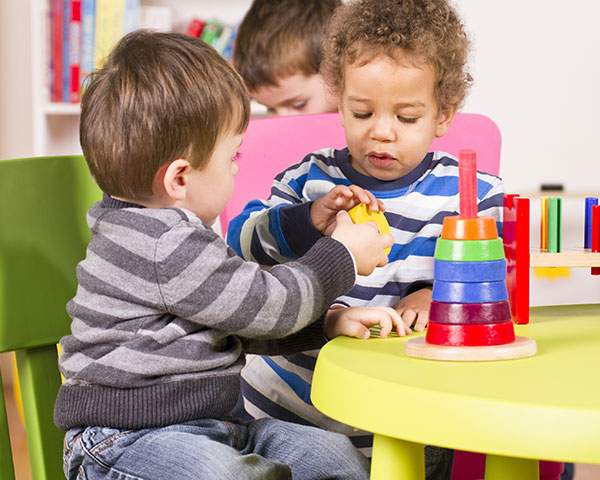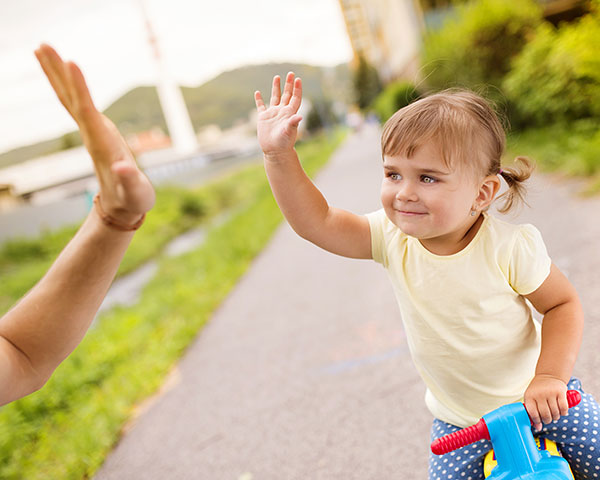
Discussing the Concept of Spirituality and Emotional Well Being in Children
D. Mirkovic & B. Pytka Toronto, Ontario
With the increasing rates of Canadian preschool children experiencing behavioural and emotional difficulties, the mental health of preschoolers is quickly becoming a significant topic of interest within the research community. Though the increasing occurrences of psychiatric concerns are linked to a variety of factors, some scholars argue that children’s decreasing emotional wellness is directly linked to their limited opportunities to discover and express their identity and spirituality (Westerlund, 2016). Often, spirituality is associated with feelings of connectedness, living presently, compassion, love, and peace (Bone, 2008). Children’s natural curiosity and wonder about spiritual aspects of life helps them better understand their experiences and can lead to a sense of hope and comfort during difficult times (Bone, 2008; Westerlund, 2016).
” Spirituality enhances well-being ”
Ontario Ministry of Education
ECEs and the spirit of the child
The significance of creating opportunities in the classroom to ensure the interconnection of the mind, body, and spirit of the child is commonly acknowledged in research; nonetheless, the spiritual dimension of development is neglected within the early education system. A majority of educational institutions avoid the implementation of emotional and spiritual development in the classroom in order to provide more time for cognitive and physical development, ignoring the fact that the spiritual and emotional are key components in the healthy development of children and communities (Baskin, 2016).
According to the Ontario Ministry of Education (2016), spirituality plays a critical role in children’s development and well-being, suggesting that educators must attend to the spirit of the child. Indeed, within the curriculum document How Does Learning Happen, the Ontario Ministry of Education (2014) acknowledges that the spiritual aspects of children’s development must be considered in order to understand and support the whole child. The significance of the mind-body-spirit connection originates from Indigenous ways of knowing, where a fine balance between the mental, the physical, and the spiritual is argued to be the basis of emotional well-being and health (Ontario Ministry of Education, 2016). Evidently, spirituality plays a critical role in supporting and enhancing the emotional well-being and health of children and can provide various opportunities for relationship building and learning within the classroom.
The purpose of this paper is to explore the link between children’s spirituality and overall emotional well-being in order to better understand the significance of promoting children’s spiritual discovery and expression in the classroom. The paper will examine how spirituality contributes to improving children’s emotional well-being and social relationships.
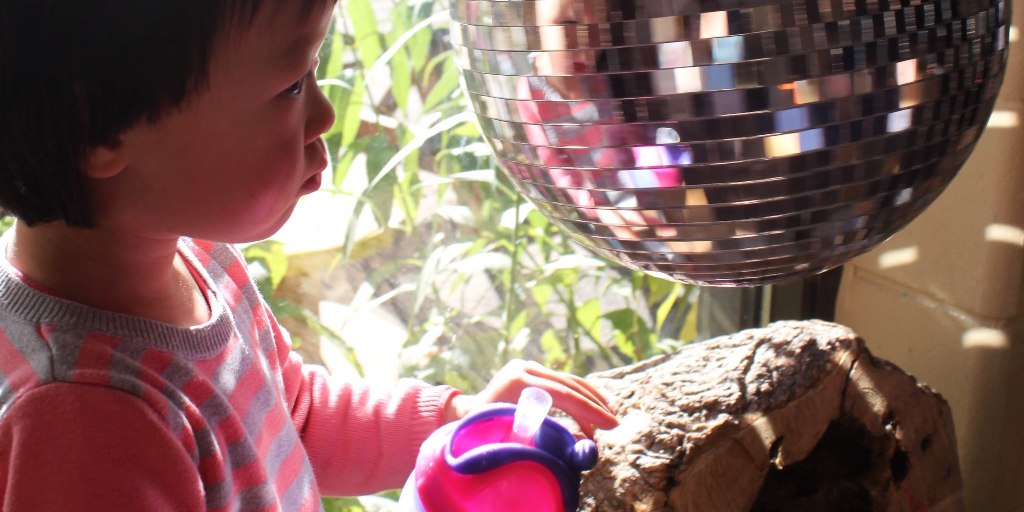
Spirituality improves relationships for children
Understandings of spirituality often vary; therefore, it is critical to note that no single definition of spirituality has been identified across the literature. Historically, spirituality and religion were considered synonymous, but recent research has called for a separation of the terms (Nelson, 2009). In recent years, there has been a shift away from a heavy focus on religion and towards considering diverse belief systems that may contribute to a child’s spiritual self, as spirituality is influenced by both internal and external factors (Baskin, 2016; Mata, 2014). For some, spirituality is conceptualised as being influenced by both irreligious and religious beliefs and values, as the origins vary greatly for each individual child (Mata, 2014). Spirituality is a complex term, which cannot be simply defined, as ones experiences will alter their spiritual development. However, key characteristics such as living in the moment, reflecting on the inner self, connecting to self and others, and showing compassion and love are thought to be critical aspects of spirituality (Nelson, 2009).
With this said, simply because a single definition of spirituality ceases to exist does not mean that educational institutions should dismiss the notion altogether; rather, learning environments should use children’s diverse spiritual experiences to support their learning and emotional well-being. For instance, mindfulness techniques, such as meditation, deep breathing, and contemplating nature, can easily be implemented into classroom environments to welcome spirituality (Ontario Ministry of Education, 2014). This is because these simple activities provide children with the space and time to ponder themselves and their lives in a space they would otherwise be too busy to do so. Embracing spirituality in the classroom does not mean that educators and policy makers must completely amend the current curriculum; rather educators should be open to allowing children to discover and express their spiritual self in the classroom.
Children’s Spirituality and Emotional Well-Being
Throughout the literature various themes arise in regard to how children’s spirituality may influence their well-being and emotional development. For the purpose of this paper, two key themes will be discussed: (1) spirituality enhances well-being and (2) spirituality improves relationships.
Spirituality Enhances Well-Being
Recent literature within various disciplines notes the significant notion of children’s spirituality, arguing that it is a key component in shaping children’s health and well-being (Boynton, 2011; Holder, Coleman, & Wallace, 2010). Indeed, spirituality is not only vital to human development, but is also an essential component in aspects of human life, health, and education (Baskin, 2016; Mata, 2014). For example, something as simple as snow falling can be a spiritual moment for some children. The marvel that is assigned to what causes snow, the uniqueness of each snowflake, and the cold snow against warm skin can spark wonder, connections to the earth, and meaningful conversations.
In a majority of circumstances the wonder, connectedness, and peace associated with spirituality are positive experiences for children, which not only provide spiritual support during difficult times, but are also linked to improved overall well-being and happiness (Holder et al., 2010). In fact, Boynton (2011) argued that through spirituality, children are embracing their inner voice, or spirit, and can experience enhanced well-being. Indeed, spirituality can be a critical contributing factor to positive identity formation, mental wellness, well-being, health, and relationships (Boynton, 2011). For instance, in a study conducted by Holder et al. (2010) examining children’s spirituality, religiousness, and happiness, the researchers found that children’s spirituality, but not their religious practices, were directly associated with increased well-being and positive emotions. Similarly, Kamitsis and Francis (2013) argued that spirituality promotes mindfulness and essential connections to the natural world. As a consequence, these key experiences can enhance children’s psychological and emotional development, and well-being (Kamitsis & Francis, 2013).
Undeniably, spirituality plays an important role in supporting the enhancement of emotional development and well-being. Because of this, educational contexts should embrace spirituality as an essential aspect of human growth and happiness. Educators and parents play a key role in supporting the development of the whole child and in doing so the spiritual aspects of children’s development cannot be neglected.
Spirituality Enhances Relationships
A key characteristic within spirituality is the notion of connectednessto ones world, self, and others. Undeniably, positive social relationships are a key contributor in well-being, as these relationships greatly influence children’s mental and physical health (Harris, 2007). In fact, family and peer relationships play a critical role in children’s identity formation and self-perception (Gulay, 2011; Kuscer & Prosen, 2005). Often, children with poor peer and familial connections experience higher rates of depression, loneliness, low self-esteem, and poor well-being (Gulay, 2011). Considering the vital role peer interactions play in identity formation and well-being, it is critical that educational settings foster welcoming spaces where children can discover themselves and their peers. In connecting to others and the world around them, children are given the opportunity to construct their identity, create meaningful interactions, and create positive social relationships (Gulay, 2011).
It is critical to note that spirituality can strengthen children’s relationship to nature and the earth as well, as a significant aspect of spirituality for emotional well-being and health is the sense of inner connectedness to something greater than human life (Westerlund, 2016). As London (2012) argued, all children can gain unique experiences from nature, providing them with essential connections to the natural world around them and various emotional, psychological, and physical benefits. Children, both with and without disabilities, are drawn to the mysteries of the natural world and share an inherent curiosity, which can be supported through spiritual development and expression (Harris, 2015). Indeed, Harris (2015) claimed that spirituality can promote exploration of natural environments for children with disabilities, giving rise to potentially enlightening experiences. Traditional classroom settings often offer occasions for educators to encourage children to make critical natural connections, all of which can promote opportunities for connecting with the self, the earth, and others in the classroom environment.
Finally, spirituality sets a noteworthy foundation for the development of morality and typically encourages children to inspire others and create positive change. In early works, such as Hay (1998), the connection between spirituality and ethics was a somewhat novel notion. Hay (1998) argued that considering children’s spirituality is critical, as a substantial relationship exists between spiritual and moral development. Hay (1998) stressed the important role of educators and educational contexts in supporting children’s spiritual and moral development.
Huber and MacDonald’s (2012) found similar conclusions in their study examining the link between altruism, empathy, and spirituality found that the three are directly linked. Indeed, the researchers found that non-religious spirituality positively influenced the development of altruism and empathy, suggesting that the promotion of spiritual practices may enhance moral development (Huber & MacDonald, 2012).
In a more recent example, Shek and Zhu (2018) conducted a 6-year longitudinal study examining the connection between moral competency and spirituality in predicting adolescents risky and problem behaviour. The researchers found that both morality and spirituality played a critical role in reducing negative and risky behaviours and were predictive of later behavioural concerns. Spirituality enhanced moral development and provided essential protective factors that decreased the likelihood of problem behaviour by providing the children with an essential moral foundation and sense of purpose (Shek & Zhu, 2018). These positive moral consequences are not only seen among children without disabilities, as spirituality and the associated benefits also play a significant role in the lives of children with disabilities, providing opportunities for self development and constructing strong connections to peers (Harris, 2015).
In summary, a strong connection can be drawn between spirituality and moral development in both children with and without disabilities. By embracing spirituality within the classroom, educators can support children’s healthy moral development, and enhance their social relationships and connections to the natural world as a result; all of which are fundamental for emotional well-being.
Conclusion
As the literature suggests, educational institutions often neglect children’s spiritual growth and expression in order to place greater emphasis on cognitive and physical aspects of development (Harris, 2007). As a result, children are experiencing increased occurrences of emotional difficulties and are bypassing critical opportunities for self and relationship enhancement (Westerlund, 2016). With this said, educators should support children’s spirituality in order to allow the whole child to benefit cognitively, socially, and emotionally. Spirituality can help promote the creation of positive social relationships (Gulay, 2011), connections to natural environments (London, 2012), and development of morality and empathy (Hay, 1998; Huber & MacDonald, 2012), all of which enhance children’s emotional well-being (Boynton, 2011; Holder et al., 2010). It is critical to remember that welcoming spirituality into the classroom is possible even though it is an elusive term. Embracing spirituality in the traditional classroom does not require educators to drastically alter the curriculum; rather it provides educators with the opportunity to open new avenues of discovery and wonder in the classroom. This is especially true when considering the complex nature of the characteristics within spirituality, as it can be developed from various contributing factors (Mata, 2014) and creates room for children to learn about themselves, others, and their world. Evidently, spirituality is a key component of early childhood education that is currently being neglected in practice; therefore, educators should embrace ideas of spiritual development in the classroom in order to promote positive relationships, moral universality, and the emotional well-being of the children in their care.
References
Baskin, C. (2016). Spirituality: The core of healing and social justice from an Indigenous perspective. New Directions for Adult and Continuing Education, 2016(152), 51–60. DOI: 10.1002/ace.20212.
Bone, J. (2008). Creating relational spaces: Everyday spirituality in early childhood settings. European Early Childhood Education Research Journal, 16(3), 343-356. DOI: 10.1080/13502930802292122
Boynton, H. M. (2011). Children’s Spirituality: Epistemology and theory from various helping professions. International Journal of Children’s Spirituality, 16(2), 109-127. DOI: 10.1080/1364436X.2011.580727
Gulay, H. (2011). The self-perception, social impact, social preference and peer relations of Turkish children between the ages of five and six. Early Child Development and Care, 181(10), 1441-1451. DOI: 10.1080/03004430.2010.534160
Harris, K. I. (2007). Re-conceptualizing spirituality in the light of educating young children. International Journal of Children’s Spirituality, 12(3), 263-275. DOI: 10.1080/13644360701714936
Harris, K. I. (2015). Children’s Spirituality and Inclusion: Strengthening a child’s spirit with community, resilience and joy. International Journal of Children’s Spirituality, 20(4), 161-177. DOI: 10.1080/1364436X.2015.1086728
Hay, D. (1998). Why should we care about children’s spirituality? Pastoral Care in Education, 16(1), 11-16. DOI: 10.1111/1468-0122.00078
Holder, M. D., Coleman, B., & Wallace, J. M. (2010). Spirituality, religiousness, and happiness in children aged 8–12 Years. Journal of Happiness Studies, 11(2), 131-150. DOI:10.1007/s10902-008-9126-1
Huber, J. T., & MacDonald, D. A. (2012). An investigation of the relations between altruism, empathy, and spirituality. Journal of Humanistic Psychology, 52(2), 206-221. DOI: 10.1177/0022167811399442
Kamitsis, I., & Francis, A. J. P. (2013). Spirituality mediates the relationship between engagement with nature and psychological wellbeing. Journal of Environmental Psychology, 36, 136-143. DOI: 10.1016/j.jenvp.2013.07.013
Kuscer, M., P. & Prosen, S. (2005). Different identities and primary school children. In Papoulia- Tzelepi, P., Hegstrup, S., Ross, A. (Eds.), Emerging identities among young children: European issues (pp.9-26). Stoke on Trent, UK: Trentham Books.
London, B. (2012). Strengthening Students Connection to Nature: A spiritual perspective. In Oxford, R. & Lin, J. (Eds) Transformative Eco-Education for Human and Planetary Survival (pp. 349-362). Charlotte, NC: Information Age Publishing
Mata, J. (2014). Sharing my journey and opening spaces: Spirituality in the classroom. International Journal of Children’s Spirituality, 19(2), 112-122. DOI: 10.1080/1364436X.2014.922464
Nelson, J. M. (2009). Psychology, religion, and spirituality. New York, NY: Springer.
Ontario Ministry of Education. (2014). How Does Learning Happen: Ontario’s Pedagogy for the Early Years. Toronto, ON: Queen’s Printer for Ontario.
Ontario Ministry of Education. (2016). Deepening our understanding of well-being in Ontario schools and how to support it in kindergarten to grade 12. Retrieved from http://www.edu.gov.on.ca/eng/about/wellbeingpdfs_nov2016e/wellbeing_engagement_e.pdf
Shek, D. T. L., & Zhu, X. (2018). Self-reported risk and delinquent behaviour and problem behavioural intention in Hong Kong adolescents: The role of moral competence and spirituality. Frontiers in Psychology, 9, 1-17. DOI: 10.3389/fpsyg.2018.00430
Westerlund, K. (2016). Spirituality and mental health among children and youth – a Swedish point of view. International Journal of Children’s Spirituality, 21(3-4), 216-14. DOI: 10.1080/1364436X.2016.1258392
The Link Between Spirituality and Emotional Well Being in Children
